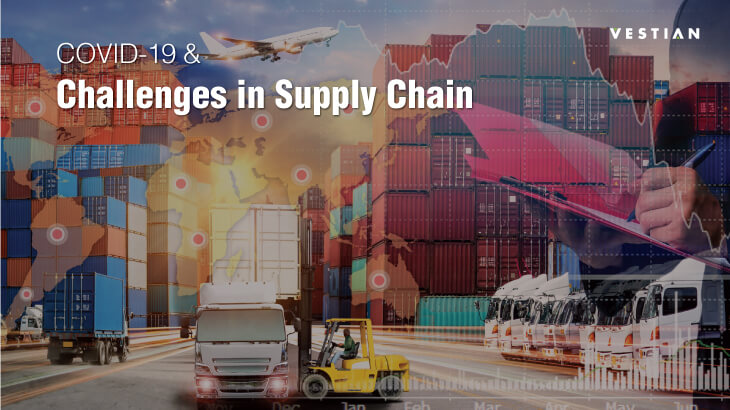Right from the onset of the worldwide pandemic, and the restrictions on international cargo movement, the global supply chain has been adversely impacted. The findings of a Fortune Report suggests supply chain disruptions in 94% of the Fortune 1000 companies, unraveling an extremely grim situation. One of the major reasons for this is extensive reliability on singular suppliers, belonging to specific geographic regions.
A Fresh Approach
From what businesses have learned in the past few months, it is clear that they need to adopt new methodologies concerning inventory management. It is time to re-evaluate contract structures, especially in terms of commitments and requirements. To begin with, businesses need to understand the possibility of temporary slowdowns or even halts in production due to changing dynamics at the source. To optimise this, they need to earnestly evaluate and rework their Supplier Relationship Management (SRM) and come to a middle ground for sharing business risks. This is especially needed in cases where high volumes are involved. Companies which had deployed Supply Chain Risk Management systems have been better able to cope with the changing scenario, and have been efficiently able to mitigate the impact, and wisdom says others should also follow suit.
It has become more important, now more than ever before, to tap new suppliers and establish a network of multiple suppliers preferably from different geographies to ensure uninterrupted flow of the requisite raw materials at all times. To this end, higher emphasis on maintaining a steady flow must be placed as against optimal costs which were more easily accessible in the past driven by volume rebates as well as a tiered pricing mechanism. Where multi-source supply isn’t an option, suppliers with multiple production facilities spanning diverse geographies must be preferred to ensure reduced risks due to border closures. They not only need to find suppliers in different economies but also need to evaluate their logistic setups along with new routes to ensure improved flow. Of course, this will require long term strategies to treat logistics providers as business partners rather than simply vendors, as was the case previously.
The Road Ahead
Many large-scale businesses are now contemplating the ‘Make vs. Buy’ model to enhance efficiency and mitigate risks. Moreover, they are also considering in-house warehousing complete with third-party logistics suppliers to create a cost-intensive albeit an uninterrupted supply chain. After all, a disrupted supply chain can bring down a business in no time, and it is only a matter of time before clients cease to consider the pandemic as a legitimate reason for perennial delays. Hence, it doesn’t come as a surprise that third-party supply chain firms are witnessing soaring demand amid the current situation. Their digital presence as well as their resilient workforce have become their strength in these times when fewer personal interactions, increased visibility, and greater dependability have become more vital than ever before.
While only time can tell which measures prove to be more successful, it is without a doubt that the COVID-19 impact has forced us all to think out of the box and restructure the supply chain that serves as the backbone of our businesses.

